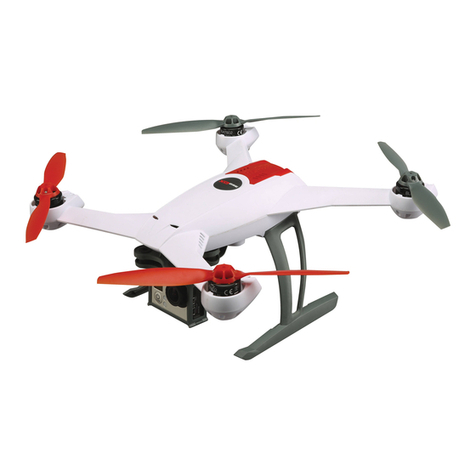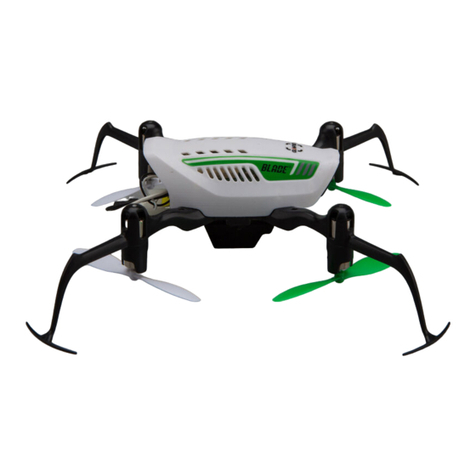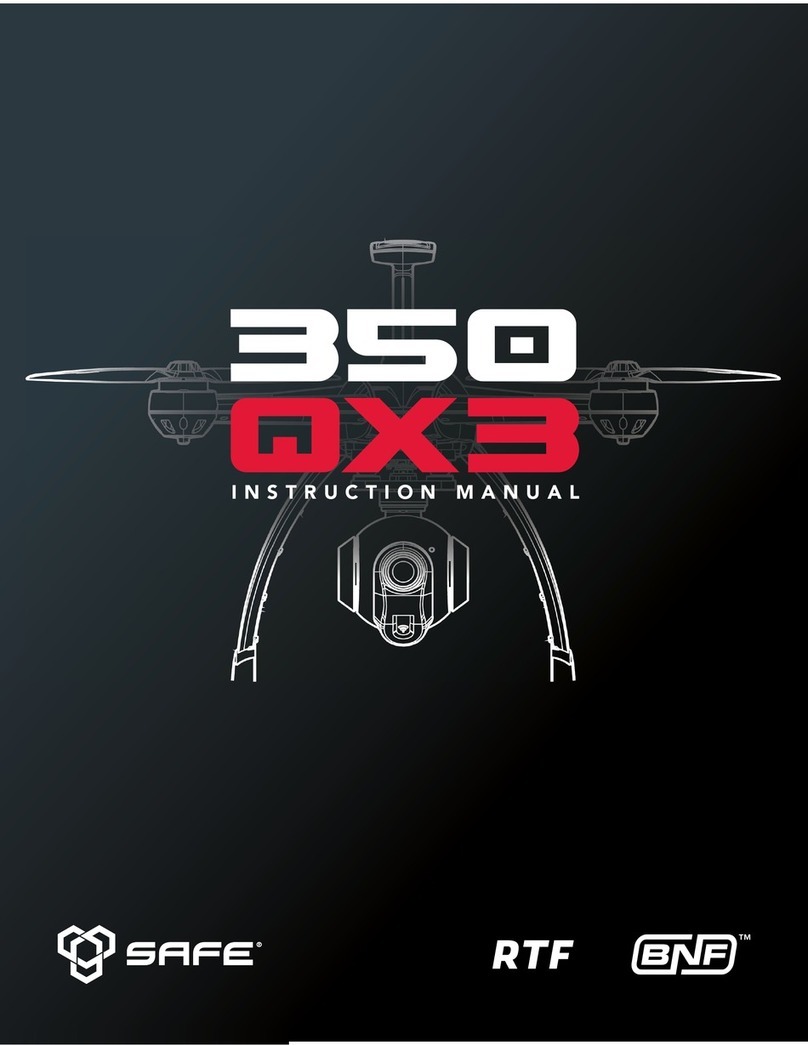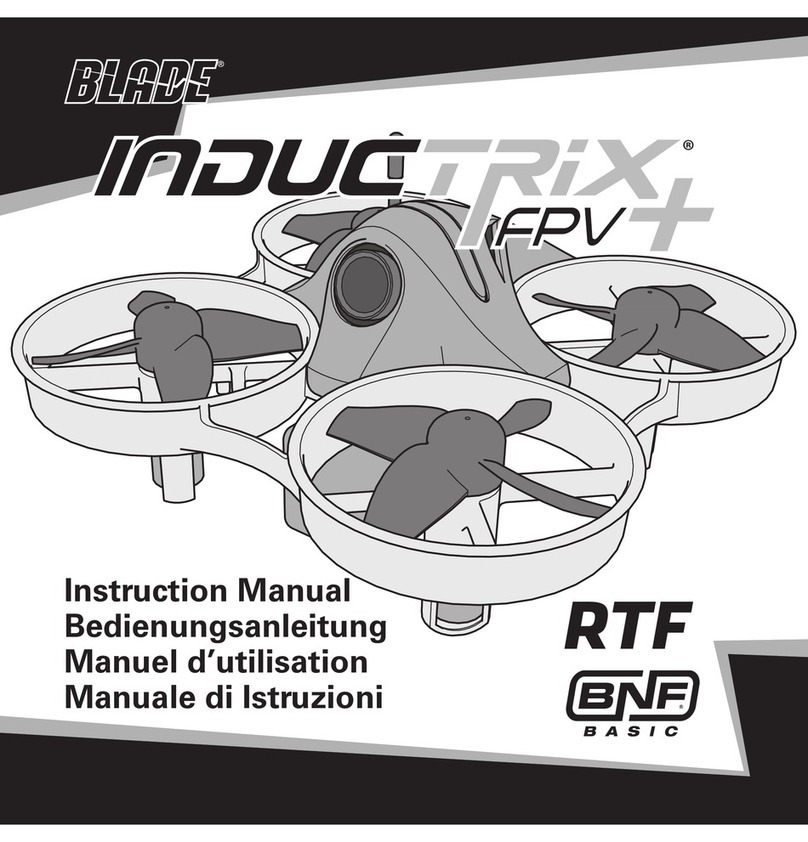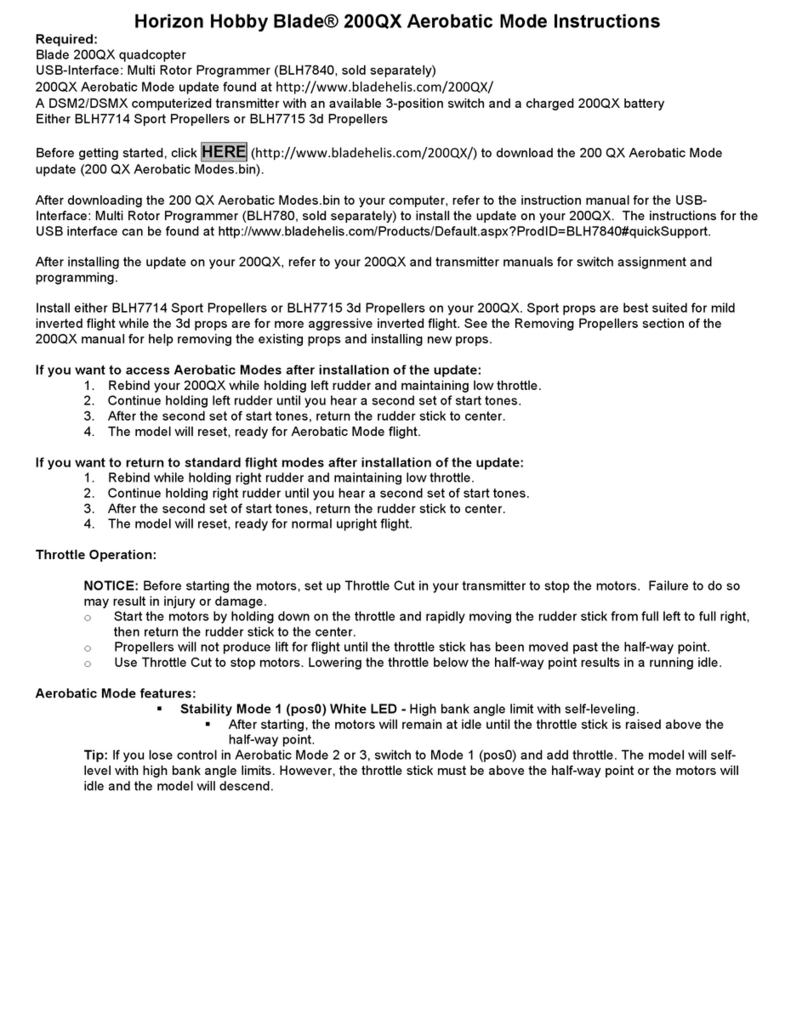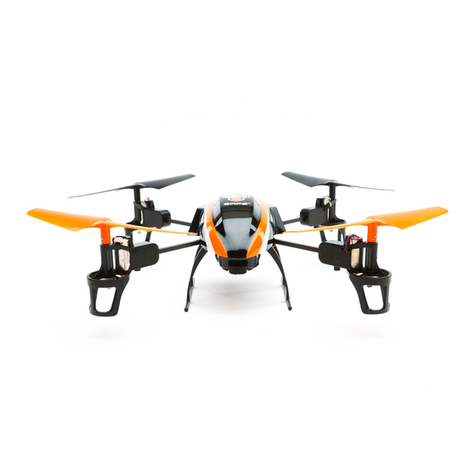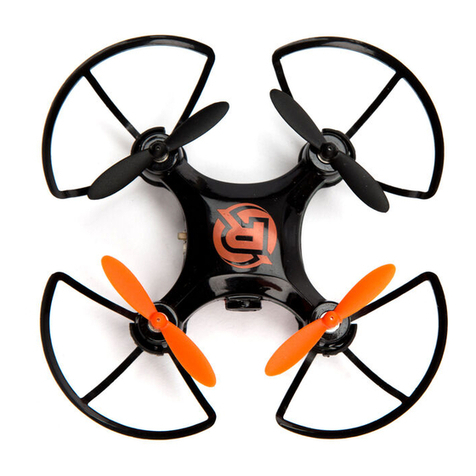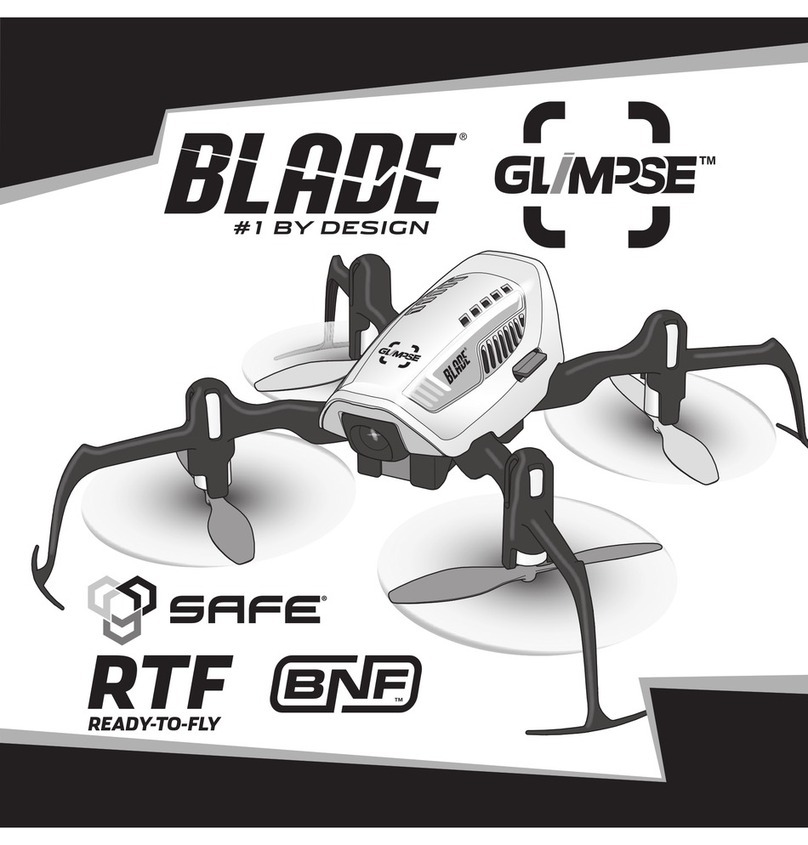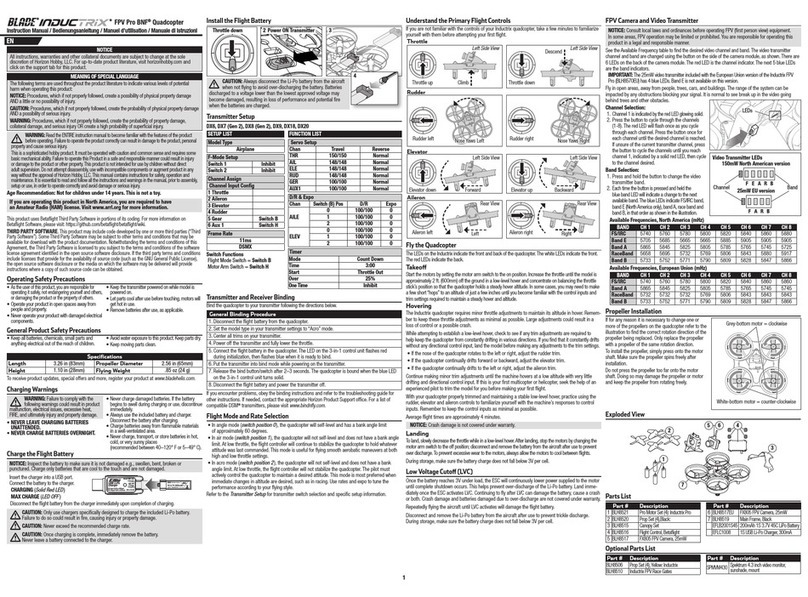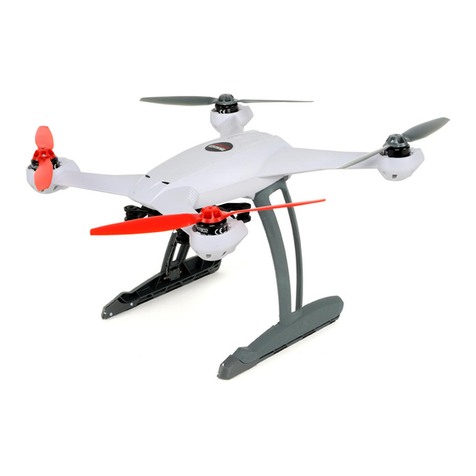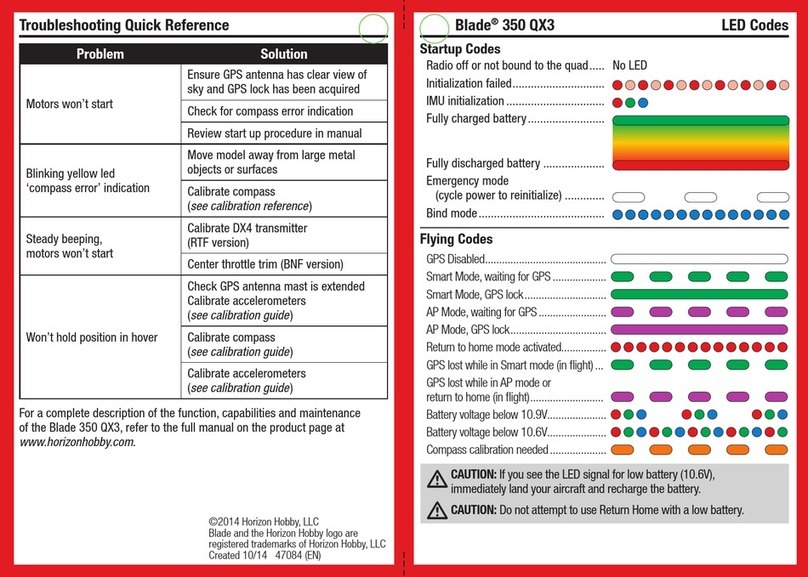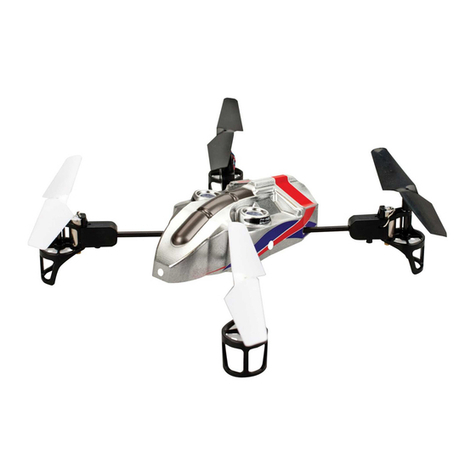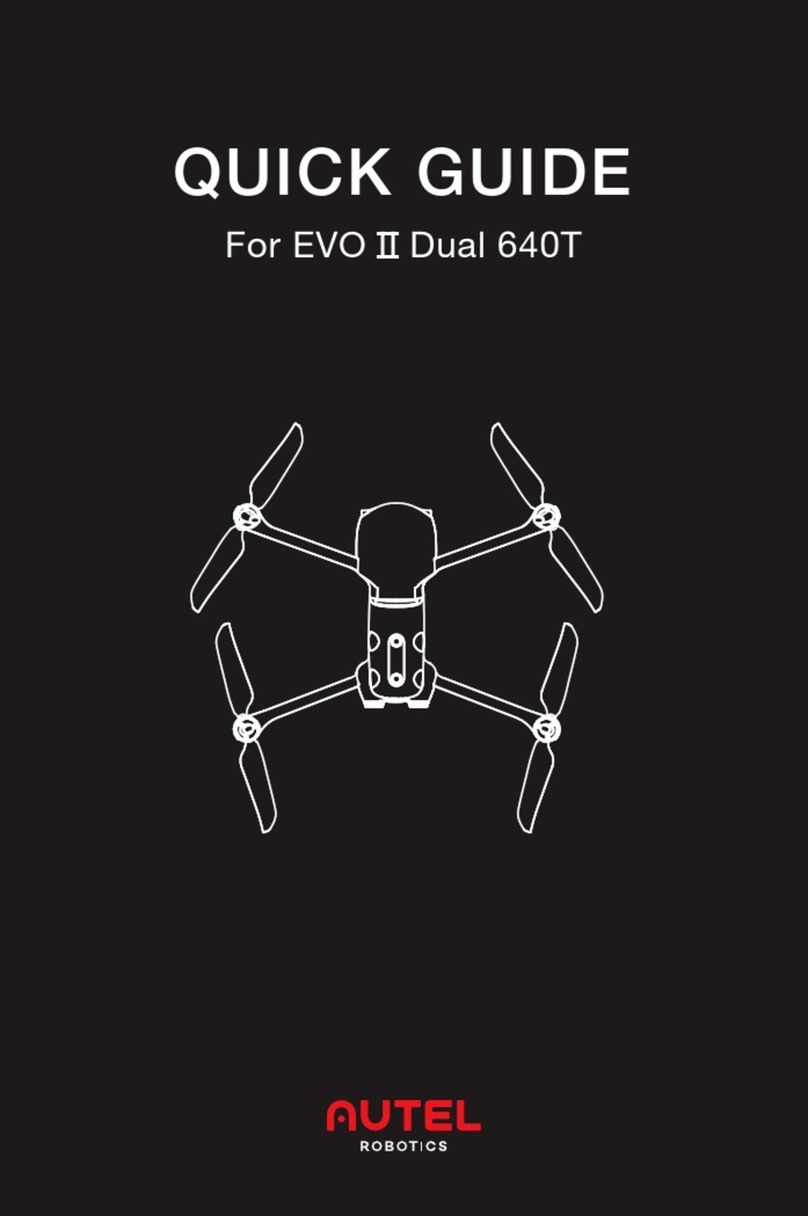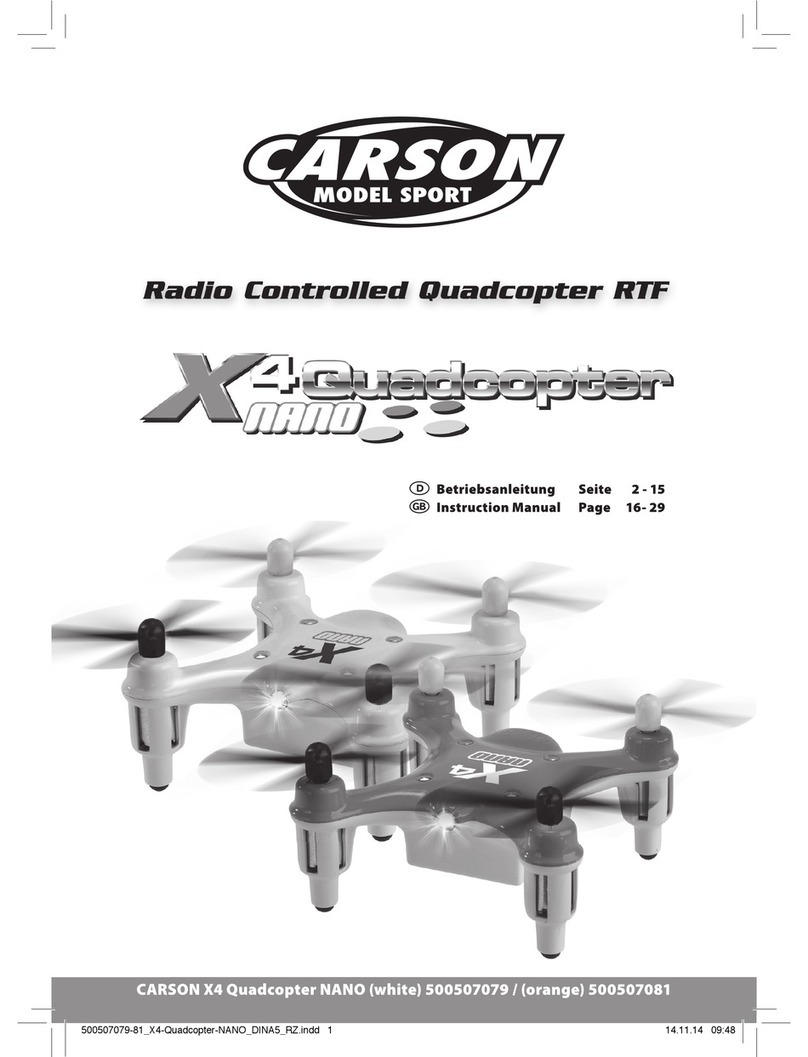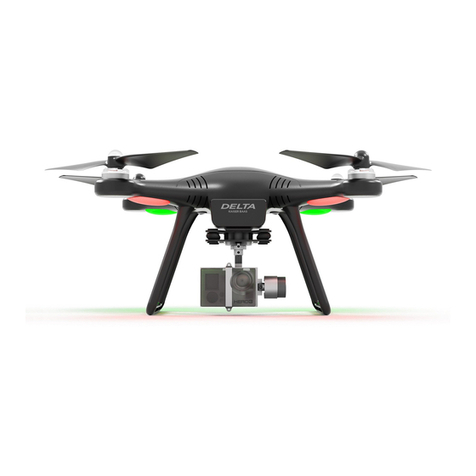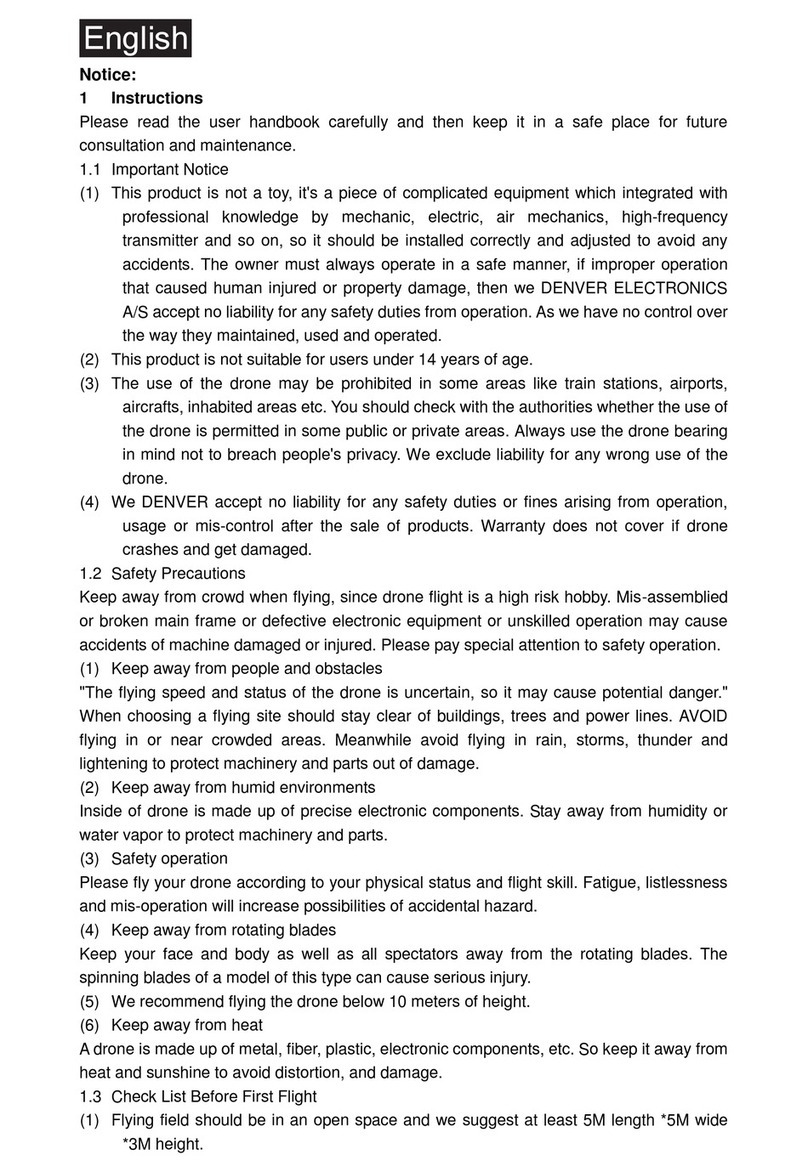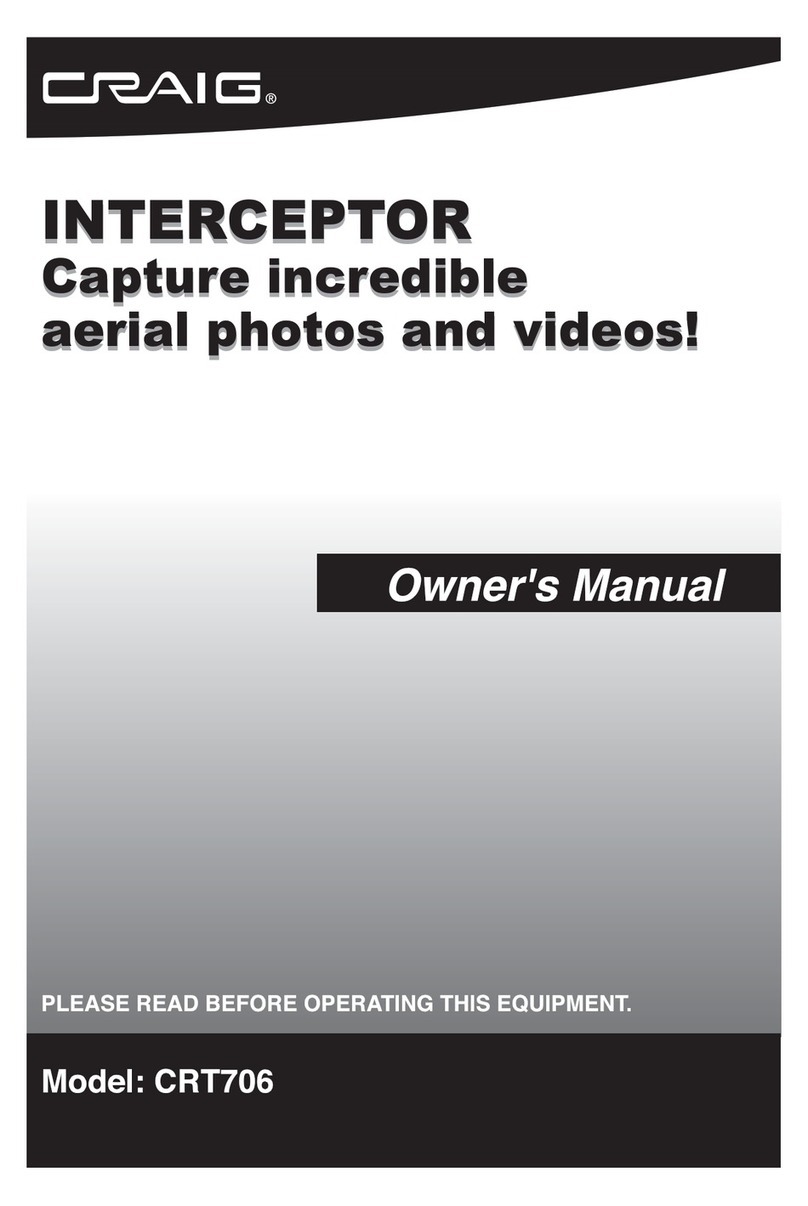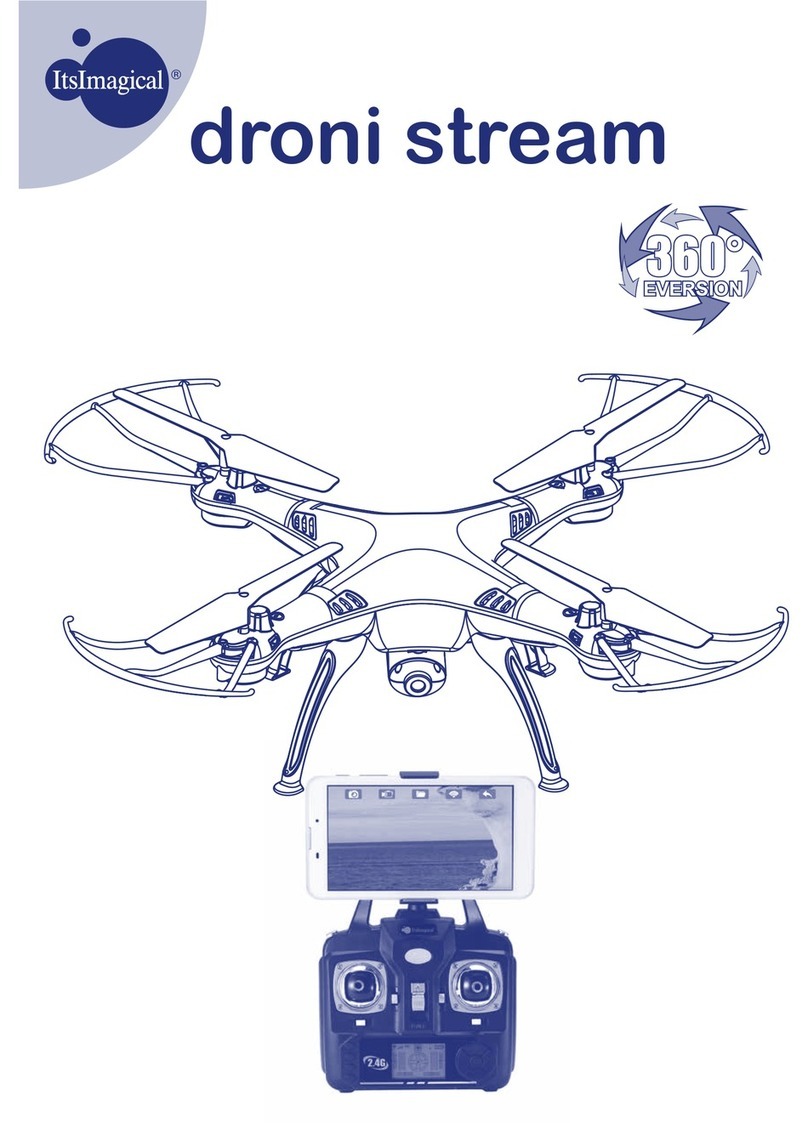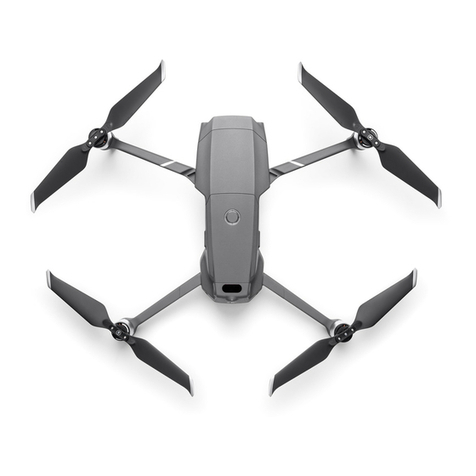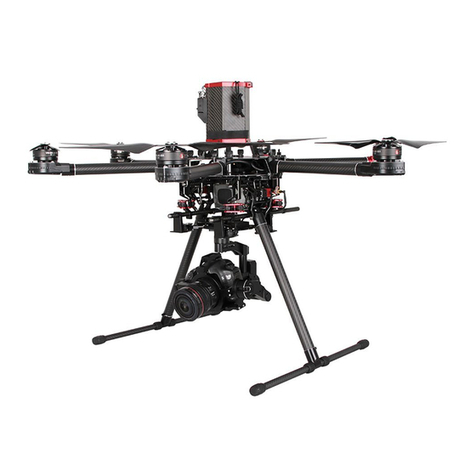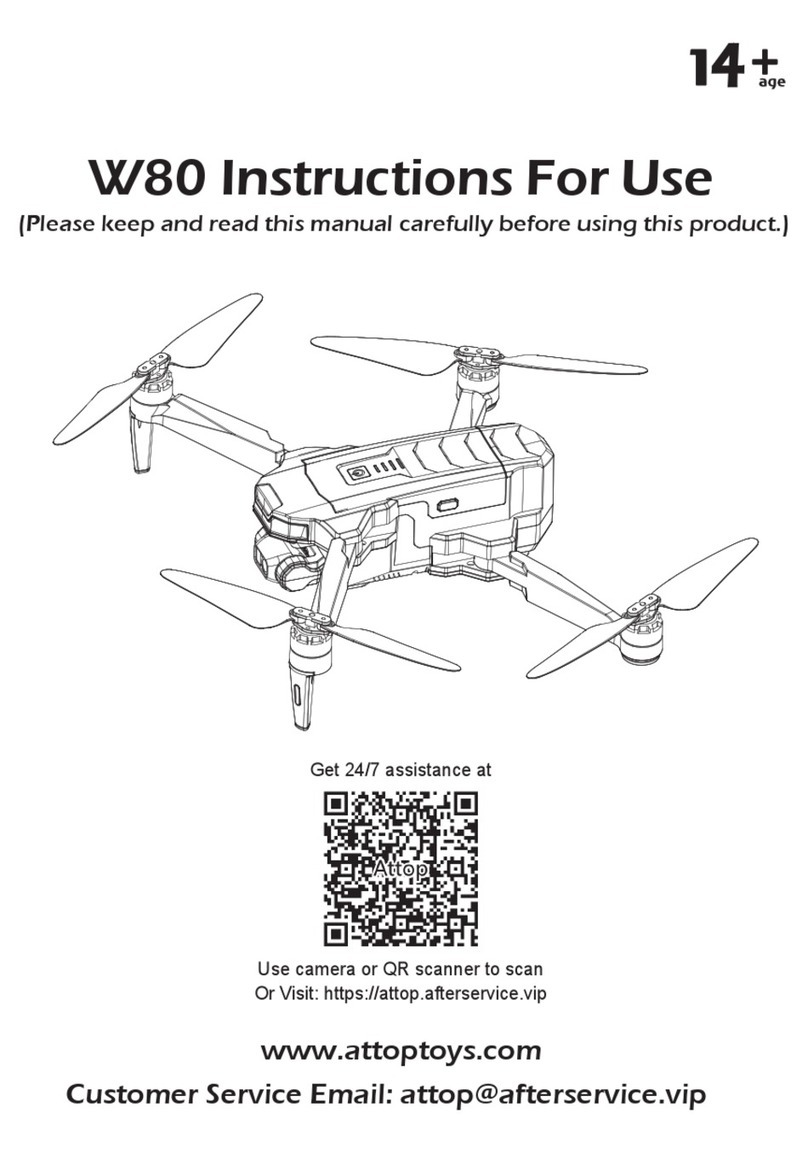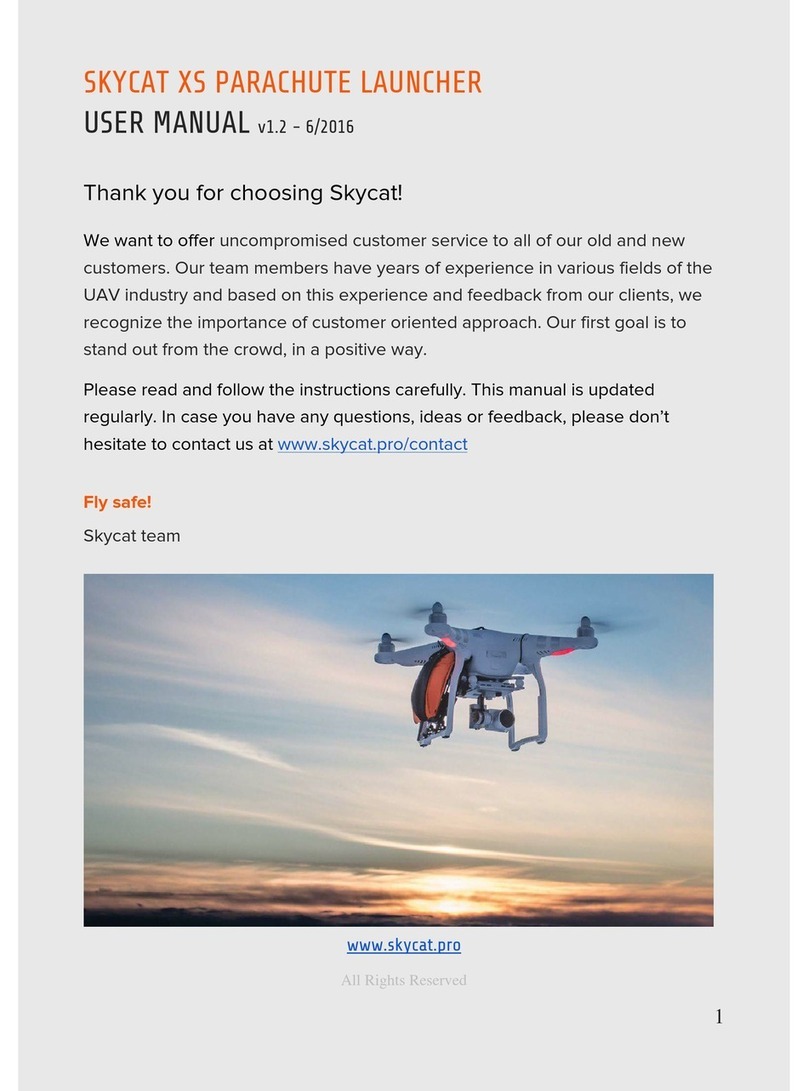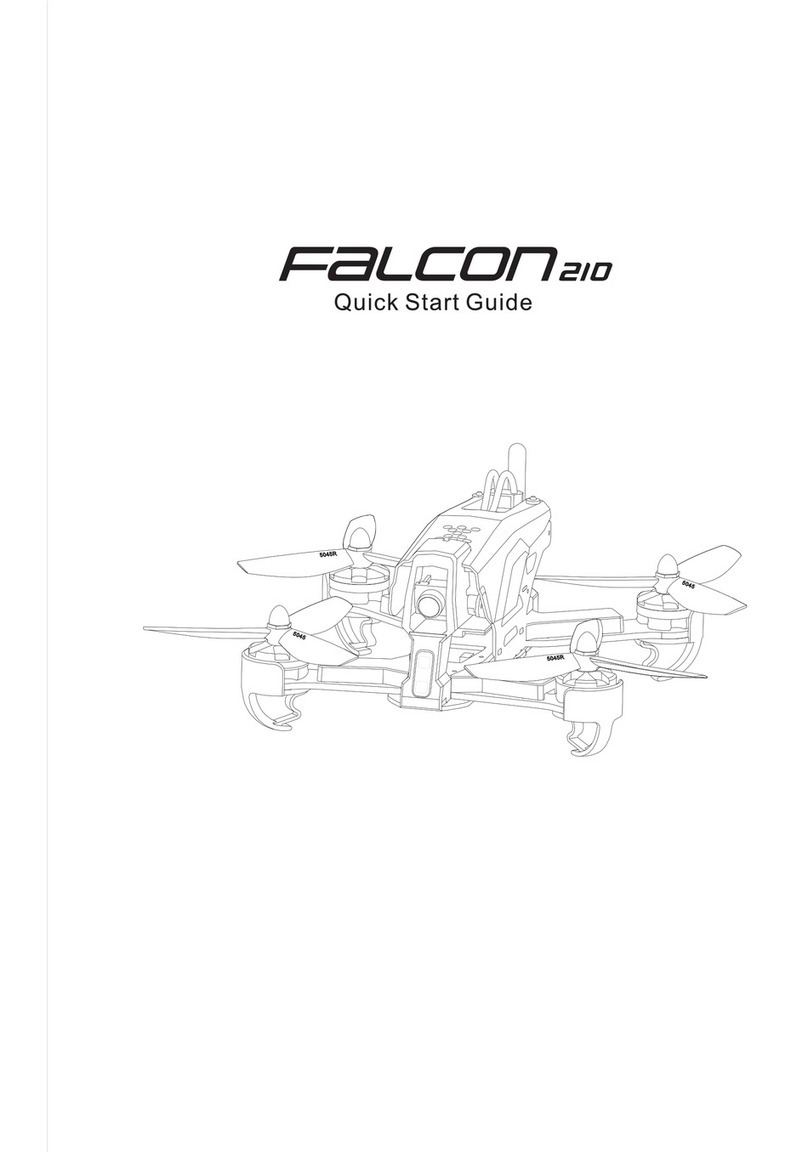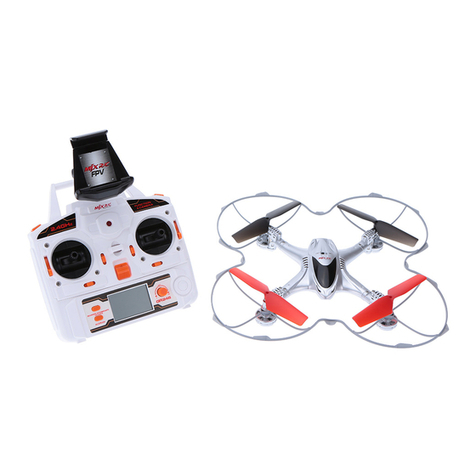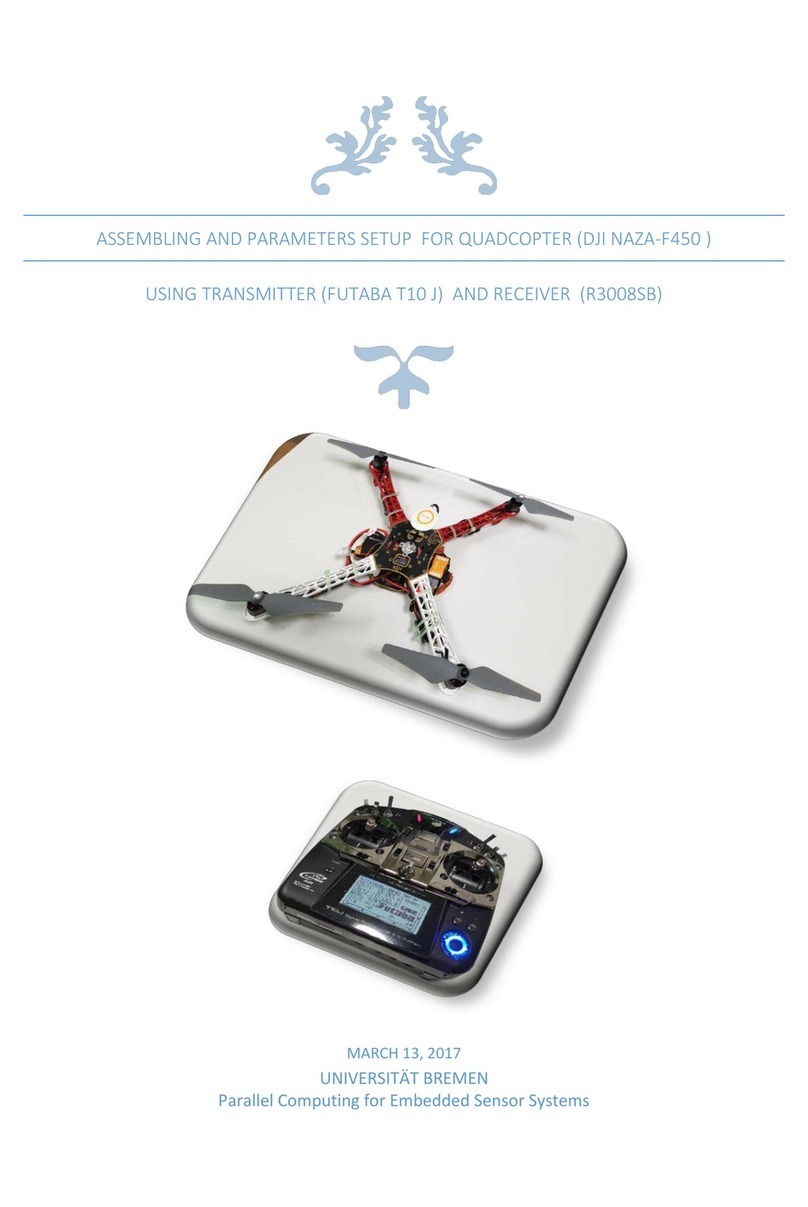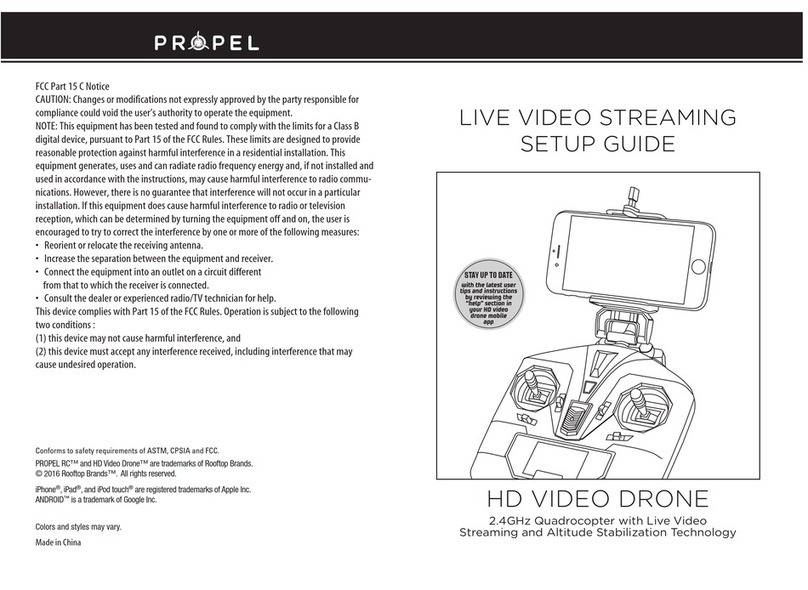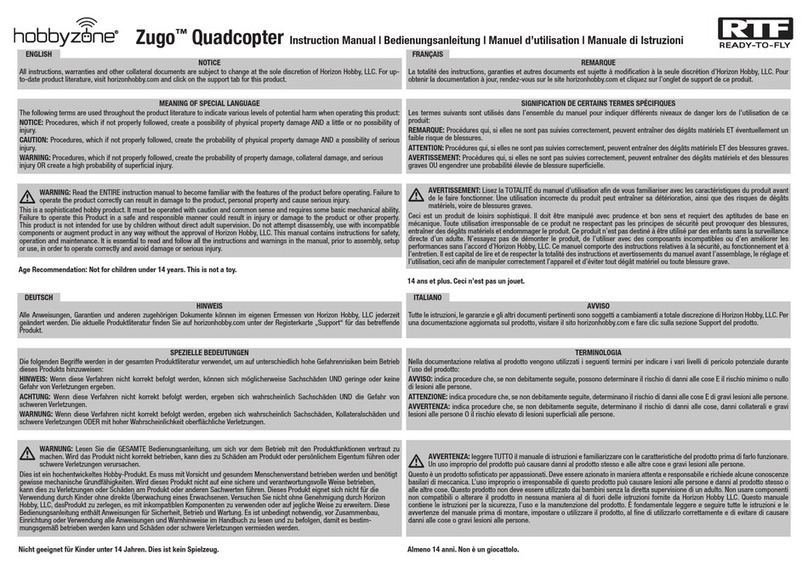AVVISO
Tutte le istruzioni, le garanzie e gli altri documenti pertinenti sono soggetti a cambiamenti a totale
discrezione di Horizon Hobby, LLC. Per una documentazione aggiornata sul prodotto, visitare il sito
horizonhobby.com e fare clic sulla sezione Support del prodotto.
SIGNIFICATO DELLE AVVERTENZE DI SICUREZZA
Nella documentazione relativa al prodotto vengono utilizzati i seguenti termini per indicare i vari livelli di
pericolo potenziale durante l’uso del prodotto:
AVVISO: Istruzioni che, se non seguite, possono determinare la possibilità di danni alle cose E di lesioni
lievi alle persone.
ATTENZIONE: Istruzioni che, se non seguite, possono determinare la probabilità di danni alle cose E la
possibilità di lesioni alle persone.
ATTENZIONE: leggere e seguire tutte le istruzioni e avvertenze riportate nel manuale prima
dell’impostazione o dell’uso. Un uso improprio del prodotto può causare danni al prodotto
stesso, alle cose e/o lesioni alle persone.
Questo è un prodotto sofisticato per appassionati. Deve essere azionato in maniera attenta e responsabile
e richiede alcune conoscenze basilari di meccanica. Non usare componenti non compatibili o alterare il
prodotto in nessuna maniera al di fuori delle istruzioni fornite da Horizon Hobby LLC.
IT
RTF/BNF
Manuale di Istruzioni
®
Avvertenze e istruzioni per le batterie
AVVERTENZA: Non seguendo le
seguenti avvertenze potrebbero verificarsi
malfunzionamenti del prodotto, problemi elettrici,
un eccessivo sviluppo di calore, INCENDI e in
definitiva lesioni e danni materiali.
• NON CARICARE MAI LE BATTERIE DURANTE LA
NOTTE SENZA SUPERVISIONE.
• Non caricare mai le batterie danneggiate.Se durante
la carica o durante l’uso si forma un rigonfiamento
della batteria, interrompere direttamente l’uso/la
carica.
• Usare sempre la batteria e il caricabatteria inclusi nella
confezione. Sconnettere la batteria dopo la carica.
• Caricare sempre le batterie lontano da materiali
infiammabili in un luogo ben ventilato.
• Non caricare,trasportare o conservare mai le batterie
in ambienti estremamente caldi, freddi o esposti al
sole (la temperatura consigliata è compresa tra 5 e
49 °C).
Precauzioni per la sicurezza durante l’uso
• Come utenti di questo prodotto,siete responsabili
per un utilizzo sicuro del prodotto, non mettendo
in pericolo voi stessi o altri o non danneggiando il
prodotto o le cose di altri.
• Utilizzare il prodotto in spazi aperti,lontano da persone
e cose.
• Non usare mai il prodotto con delle componenti
elettriche danneggiate.
• Lasciare la trasmittente accesa quando il modello è
acceso.
• Lasciare raffreddare le componenti dopo l’uso prima
di toccarle, i motori si scalderanno durante l’uso.
• Rimuovere le batterie dopo l’uso,se possibile.
Precauzioni di sicurezza del prodotto generali
• Tenere tutte le batterie, le sostanze chimiche, le parti
piccole e tutte le componenti elettriche fuori dalla
portata dei bambini.
• Evitare il contatto con l’acqua di questo prodotto.
Mantenere asciutte le componenti.
• Mantenere pulite le parti mobili.
Istruzioni del RAEE per lo smaltimento da parte di utenti dell’Unione Europea
Questo prodotto non deve essere smaltito assieme ai rifiuti domestici. Al contrario,
l’utente è responsabile dello smaltimento di tali rifiuti che devono essere portati in un
centro di raccolta designato per il riciclaggio di rifiuti elettrici e apparecchiature elet-
troniche. La raccolta differenziata e il riciclaggio di tali rifiuti provenienti da apparec-
chiature nel momento dello smaltimento aiuteranno a preservare le risorse naturali e
garantiranno un riciclaggio adatto a proteggere il benessere dell’uomo e dell’ambiente.
Per maggiori informazioni sui centri di raccolta, contattare il proprio ufficio locale, il
servizio di smaltimento rifiuti o il negozio presso il quale è stato acquistato il prodotto.
Informazioni sulla conformità per l’Unione Europea
Dichiarazione di Conformità EU:
Horizon Hobby, LLCcon la presente dichiara che il prodotto è conforme ai requisiti es-
senziali e ad altre disposizioni rilevanti della direttiva RED.
Una copia della dichiarazione di conformità per l’Unione Europea è disponibile a: http://www.horizon-
hobby.com/content/support-render-compliance.
Specifiche
Lunghezza 83mm Diametro elica 65mm
Altezza 28mm Peso in volo 16 g
Per registrare il prodotto online, visitare il sito www.bladehelis.com
Componenti RTF BNF
Telaio – Blade Inductrix Incluso Incluso
Motori – 6mm Brushed Installato Installato
Elettronica di bordo – 3-in-1 mixer/ESCs/Gyro Installato Installato
Batteria – 150mAh 1S 3.7V 25C Li-Po Incluso Incluso
Caricabatteria – caricabatteria USB 1S LiPo, 300 mAh Incluso Incluso
Trasmittente – MLP4DSM Incluso Necessario
Inserire le pile AA nel trasmettitore facendo attenzi-
one alla polarità. Bisogna sostituirle quando il LED
lampeggia e si attiva un allarme sonoro (beep).
Noi raccomandiamo di usare solo pile alcaline AA
nel trasmettitore, comunque è possibile usare anche
batterie ricaricabili NiMH.
ATTENZIONE: se si usano batterie
ricaricabili, si raccomanda di ricaricare
solo queste. Se si tenta di ricaricare pile non
ricaricabili, si potrebbe provocarne lo scoppio con
conseguenti ferite alle persone e danni alle cose.
Carica della batteria di volo
Installazione batterie nella trasmittente (RTF)
AVVISO: caricare solo batterie che siano fredde al tatto e che non siano danneggiate. Controllare la
batteria per verificare che non sia gonfia, piegata, rotta o bucata.
Inserire il caricatore in una porta USB.
Connettere la batteria al caricabatteria.
Carica in corso (acceso rosso)
Carica massima (spento)
Scollegare sempre la batteria dal caricatore immediatamente dopo il termine della carica.
ATTENZIONE: usare solo caricatori progettati specificamente per queste batterie LiPo. In caso
contrario si potrebbero incendiare procurando danni.
ATTENZIONE: non superare le correnti di carica raccomandate.
ATTENZIONE: quando la carica è terminata,scollegare subito la batteria dal caricatore.
Taglio di bassa tensione (LVC)
Il controllo elettronico di velocità continuerà ad abbassare la corrente erogata al motore fino allo spe-
gnimento completo quando la batteria raggiunge i3Vsotto carico. Questo fa si che si possa evitare
una scarica eccessiva della batteria Li-Po. Effettuare immediatamente l’atterraggio quando il regola-
tore di velocità attiva il taglio di bassa tensione (LVC). Continuare afar volare il modello dopo che ha
raggiunto il taglio di bassa tensione (LVC) può danneggiare la batteria, causare lo schianto del velivolo
oentrambe le cose. Idanni della batteria oquelli dovuti allo schianto in seguito auno scaricamento
eccessivo non sono coperti dalla garanzia.
Far volare l’elicottero fino all’attivazione del taglio di bassa tensione (LVC) danneggia la batteria
dell’elicottero.
Dopo l’uso scollegare erimuovere dal velivolo la batteria Li-Po per evitare lo scaricamento passivo.
Durante la conservazione, assicurarsi che la carica della batteria non scenda sotto i3 Vper cella.
I LED dell’Inductrix indicando la parte anteriore e posteriore del quadricoptero. I LED bianchi indicano la
parte anteriore e i LED rossi indicano la parte posteriore.
Decollo
Agire sull’acceleratore finché il modello si alza di circa 60 cm da terra e concentrarsi sul comando
motore per fare in modo che il quadricoptero mantenga costante questa quota in volo stazionario.
Inizialmente ci sarà qualche piccolo salto di quota, finché non si familiarizza sui comandi necessari
per mantenere il modello in volo stazionario ad una quota costante.
Hovering
Lo Glimpse richiede degli aggiustamenti minimi sul comando motore per mantenere la quota. Bisogna
tenere ben presente che questi aggiustamenti devono essere il più possibile ridotti, perché i comandi
troppo ampi portano a perdere il controllo e, di conseguenza, a causare una caduta.
Mentre si tenta di stabilizzare il volo stazionario a bassa quota, conviene controllare se sono neces-
sarie delle regolazioni sui trim per evitare una deriva costante in varie direzioni. Se si notano queste
derive senza aver dato alcun comando direzionale, conviene far atterrare il modello prima di fare qual-
siasi regolazione con i trim. Altre informazioni sulla posizione e il funzionamento dei trim, si trovano
nella sezione “Capire i controlli primari di volo” su questo manuale.
• Se il naso dello nano QX ruota verso destra o sinistra, regolare il trim del timone.
• Se lo nano QX si sposta continuamente in avanti o indietro, allora bisogna intervenire sul trim
dell’elevatore.
• Se lo nano QX si sposta continuamente a destra o a sinistra, allora bisogna intervenire sul trim
dell’alettone.
Si continui a fare piccole regolazioni sui trim finché il modello resta in volo stazionario con una deriva
minima e controlli ridotti. Se questo è il vostro primo modello di quadricoptero, vi conviene chiedere
l’aiuto di un modellista esperto in questo campo, specialmente per il primo volo.
Quando il quadricoptero è trimmato correttamente e si trova in volo stazionario a bassa altezza,
provare ad usare i controlli di direzionale, elevatore e alettone per familiarizzare con le risposte del
quadricoptero ai vostri comandi. Ricordarsi di usare una quantità di comandi limitata.
AVVISO: I danni da incidente non sono coperti dalla garanzia.
Per prevenire un’usura eccessiva dei motori, lasciarli raffreddare sempre tra un volo e l’altro.
Volo del Quadricoptero
Alettone
Elevatore
Timone
Informazioni sui comandi di volo principali
Se non avete ancora familiarità con i comandi del vostro quadricoptero Glimpse è necessario dedicare
alcuni minuti per familiarizzarsi con essi prima di tentare il primo volo.
Throttle
Alettone a
sinistra Sinistra Destra
Vista posteriore
Avanti Indietro
Vista laterale Vista laterale
Timone
a sinistra
La fusoliera vira a destraLa fusoliera vira a sinistra
Throttle alzato
Vista laterale Vista laterale
Discesa
Salita
Vista posteriore
Throttle abbassato
Timone
a destra
Elevatore
abbassato Elevatore
alzato
Alettone a
destra
Scelta della corsa (RTF)
Il quadricoptero Inductrix nella versione RTF arriva con una
trasmittente Blade MLP4DSM.
• Quando si accende, il trasmettitore si trova in corse massime.
• Per cambiare di corsa premere e rilasciare lo stick di destra.
• Nella modalità low rate, l’angolo di virata del quadricoptero
è limitato e rilasciando entrambi gli stick, il quadricoptero si
auto-livella. Questa modalità tipicamente viene scelta da piloti
che preferiscono un controllo più semplice e docile durante
i primi voli.
• Nella modalità high rate, l’angolo di virata del quadricoptero è
più ampio e rilasciando entrambi gli stick, il quadricoptero si auto-livella.
Selezione dual rate
ABCDE F
Modalità
1
Alettone
(Sinistra/Destra)
Throttle
(Su/Giù)
Trim
del throttle Trim
dell’alettone Trim del
timone Trim
dell’elevatore Timone
(Sinistra/Destra)
Elevatore
(Su/Giù)
Modalità
2
Alettone
(Sinistra/Destra)
Elevatore
(Su/Giù)
Trim
dell’elevatore Trim
dell’alettone Trim del
timone Trim
del throttle Timone
(Sinistra/Destra)
Throttle
(Su/Giù)
Installazione della batteria di volo
ATTENZIONE: scollegare sempre la batteria LiPo dall’aereo
quando non si deve volare, per evitare di sovrascaricarla. Le batterie
scaricate al di sotto della soglia minima approvata, si potrebbero danneggia-
re perdendo capacità o anche incendiarsi quando si tenta di ricaricarle.
1 Stick motore
in basso
2 Posizione ON 3
4
Connessione (binding) fra trasmettitore e ricevitore
Il quadricoptero Inductrix non richiede impostazioni specifiche della trasmittente per eseguire il volo
standard. Usando una trasmittente computerizzata, basta collegare (bind) il quadricoptero alla trasmit-
tente, selezionando il tipo di modello “Acro” o “Aereo.”
Per connettere (bind) le quadricoptero al trasmettitore scelto, si prega di seguire le indicazioni riportate
qui di seguito.
ATTENZIONE: Quando si utilizza un trasmettitore Futaba con un modulo Spektrum DSM,è necessario
invertire il canale del gas ed effettuare nuovamente il Binding. Consultare il manuale del vostro modulo
Spektrum per settare nuovamente il Bind ed il FailSafe. Consultate il manuale della vostra trasmittente per
effettuare l’inversione del canale del gas.
Se si incontrassero problemi, osservare le istruzioni per il “binding”e far riferimento alla guida per la soluzione
dei problemi per ulteriori istruzioni. Se necessario contattare il servizio assistenza Horizon. Per un elenco
completo dei trasmettitori DSM compatibili visitare il sito www.bindnfly.com.
Controllo trasmettitore (RTF)
La rivoluzionaria tecnologia SAFE usa una combinazione innovativa di sensori ad assi multipli e un software
che permette al modello di conoscere la sua posizione relativa all’orizzonte. Questo riferimento spaziale viene
utilizzato per creare un inviluppo di volo controllato che il velivolo usa per mantenersi con angoli di rollio tali da
permettere un volo più sicuro.
Tecnologia
Scelta della
riduzione di
corsa
Connessione
(bind)
Procedura generale per la connessione (binding)
1. Scollegare la batteria dal quadricoptero.
2. Selezionare "Acro" come tipo di modello nelle impostazioni della trasmittente.
3. Centrare tutti i trim sulla trasmittente.
4. Spegnere la trasmittente e portare lo stick motore completamente in basso.
5. Collegare la batteria di bordo al quadricottero. Il LED dell’unità di controllo 4 in 1 lampeggia in rosso
durante l’inizializzazione, poi lampeggia in blu quando è pronto per la connessione (bind).
6. Mettere il trasmettitore nel modo “bind” e accenderlo.
7. Rilasciare il pulsante/interruttore di “bind” dopo 2-3 secondi. Il quadricoptero è connesso quando il LED
blu sull’unità di controllo resta acceso con luce fissa.
8. Scollegare la batteria dal modello e spegnere il trasmettitore.
Procedura di “binding” con trasmettitore MLP4DSM
1. Scollegare la batteria dal quadricoptero.
2. Centrare tutti i trim sul trasmettitore.
3. Spegnere la trasmittente e portare lo stick del motore completamente in basso.
4. Collegare la batteria di bordo al quadricottero. Il LED dell'unità di controllo 4 in 1 lampeggia in rosso
durante l'inizializzazione, poi lampeggia in blu quando è pronto per la connessione (bind).
5. Quando il LED blu lampeggia, mantenere premuto lo stick sinistro mentre si accende la trasmittente
(si deve sentire un clic e un beep lungo).
6. Rilasciare lo stick di sinistra. Il trasmettitore emette un beep e il suo LED lampeggia. Il quadricoptero è
connesso quando il LED blu sull’unità di controllo resta acceso con luce fissa.
7. Scollegare la batteria dal modello e spegnere il trasmettitore.
Guida alla soluzione dei problemi
Problema Possibile causa Soluzione
Il quadricoptero non
risponde al comando
del gas
Stick e/o trim del motore troppo
in alto Resettare i controlli con stick e trim
completamente in basso
Il quadricoptero non
funziona ed emette odo-
re di bruciato dopo aver
connesso la batteria
Batteria di bordo collegata con
polarità invertita
Sostituire il circuito del 4-in-1. Collegare
la batteria di bordo facendo attenzione alla
polarità
ll LED sulla ricevente
lampeggia velocemente
e il qaudricoptero non
risponde alla trasmitten-
te (durante il “binding”)
Trasmettitore troppo vicino al
modello durante la procedura di
“binding”
Spegnere il trasmettitore. Allontanare il tra-
smettitore all’aereo. Scollegare e ricollegare
la batteria di bordo. Ripetere la procedura di
“binding” seguendo le istruzioni
Il comando per il "bind" non è
stato premuto all'accensione del
trasmettitore
Spegnere il trasmettitore e ripetere la
procedura
Il modello o il trasmettitore sono
troppo vicini a grossi oggetti me-
tallici, sorgenti WiFi o ad un altro
trasmettitore
Spostare il modello e il trasmettitore in un
altro posto prima di ripetere la procedura
Il LED della ricevente
lampeggia rapidamente
ed il quadricoptero non
risponde alla trasmitten-
te (dopo aver effettuato
il “binding)
Non sono passati 5 secondi
dall’accensione del trasmettitore
al collegamento della batteria di
bordo
Lasciare acceso il trasmettitore. Scollegare e
ricollegare la batteria allo quadricottero
Lo quadricottero è connesso ad
una memoria diversa (solo tra-
smettitori con ModelMatch)
Scegliere la memoria giusta sul trasmetti-
tore. Scollegare e ricollegare la batteria allo
quadricottero
Batteria di bordo o del trasmettitore
quasi scariche Sostituire o ricaricare le batterie
Il modello o il trasmettitore sono
troppo vicini a grossi oggetti me-
tallici, sorgenti WiFi o ad un altro
trasmettitore
Spostare il modello e il trasmettitore in un
altro posto prima di ripetere la procedura
Cade direttamente dopo
il decollo o non decolla Eliche nella posizione sbagliata o
modalità di volo scelta non corretta Effettuare le regolazioni necessarie
